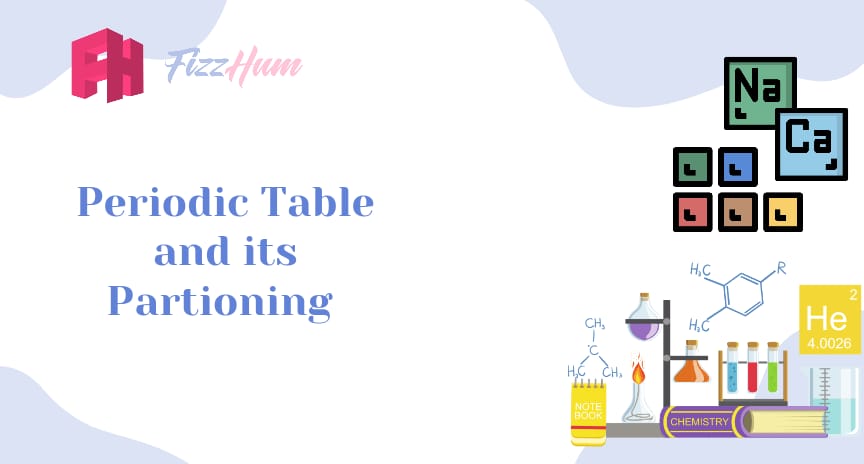- Home
- difference between Periods and Groups
difference between Periods and Groups
Introduction:
In high school, all of us have seen Periodic Table and experienced studying it in Chemistry. Many of us who are passionate about chemistry have also tried to memorize while some of us tried to learn it by force and for the sake of quizzes. As we all know, the periodic table is divided into Periods and Groups.
Students in high school often find it difficult to differentiate between two portions of the periodic table. To eliminate this confusion, we have brought this article for you that will elaborate on the difference between periods and groups in a periodic table.
Periodic Table - a Recap:
A periodic table is a grid of elements arranged in horizontal and vertical format. The periodic table seems to be a table full of chemical elements. But if you take a deep look, you will observe that it is a gateway that will lead you to explore greater knowledge. The periodic table is a key to in-depth information for scientists and researchers. It was first designed by Dmitri Mendeleev in 1869.
The importance of the Periodic Table can be seen from the fact that it has been 100 years since the creation of it and still it is used by researchers. Not only this, it is getting updated with the passage of each day. Periodic Table is distributed in Periods and Groups. The elements of the Periodic Table are allocated in Periods and Groups depending on their properties and characteristics.
Periods in a Periodic Table:
The horizontal rows of elements in a Periodic Table are called a period. The atomic number of the elements in the periods increases continuously. The electronic configuration of the elements is changed frequently. The elements in the periods are arranged according to the valence electrons of the elements.
For instance, the element that has only 1 electron in its outermost shell will be placed in the leftmost block of the respective period. In the periodic table, alkali metals hold this position in the period.
On the other hand, the elements that have their valence shell full i.e. 8 electrons, will be placed at the end of their respective period in the table. In this case, the set of noble gases is the one that is placed in the last period.
Groups in a Periodic Table:
The vertical columns of elements in a Periodic table are called a group. There is a total of 18 groups in a Periodic Table. The groups are arranged from left to right in the table. The atomic number of the elements in the group also increases but the difference is that the change in atomic number is not regular.
It means the atomic number of the elements is arranged in ascending order but with an uneven difference. Although, the electronic configuration of the valence shell electrons of the groups is the same as the ones in periods.
For instance, the elements in the first group have a single electron in the outermost shell, and elements in group 2 have 2 electrons in their valence shell and so on. Due to this fact, the properties of the elements in the group are similar to each other.
Difference between Periods and Groups
There is a very prominent difference between Periods and Groups. The difference could be seen depending upon the traits of the different elements in these two sections. Other than this, we can characterize these two terms upon some other factors also that are explained below.
|
Periods |
Groups |
|
The First period is called the short period. It consists of only two elements. |
Group one is called Alkali Metals. It has all the elements that have one electron in its outermost shell. |
|
The Second and Third period consists of eight elements each. The name used for the second and third periods is the normal period. |
The family of elements that are organized in the second group is Alkaline Earth metals. In this group, there are a normal set of elements. In the normal elements, all the shells are filled with the electron except for the outermost shell that has space for 1 electron in it. |
|
The Fourth and Fifth periods are named as long periods. The number of elements in these periods is eighteen. |
The next group is group 13. In this group, the elements with three electrons are arranged. The name of the group is Boron that is selected for this group. |
|
The Sixth and Seventh periods are known as very long periods. There are in total 14 elements in both of the periods. Due to the problem of space, these two series are placed below the normal periodic table to keep it convenient and neat. |
The other families of groups are Carbon, Nitrogen, Oxygen, Halogen, and Noble family. Group three to twelve are known as Transition Elements. In these elements, the “D” shell has a vacancy for elements to be filled. |
Final Thoughts:
Periodic Table is a great discovery of its time. It came to existence because of the work of brilliant scientist; Dmitri Mendeleev. It is because of him that we in the 21st century still make use of it. Not only this, it is expanding over time. The two important portions of this table are periods and groups.
With the help of this article, we have tried our best to explain the difference between periods and groups. By reading this article, the reader will be able to draw a line between the characteristics of these two terms very easily.



.png)

What other's say about : How ThePhone thriller..